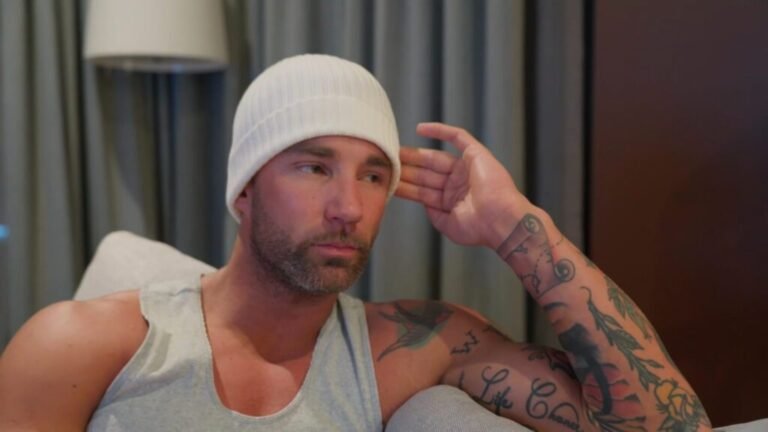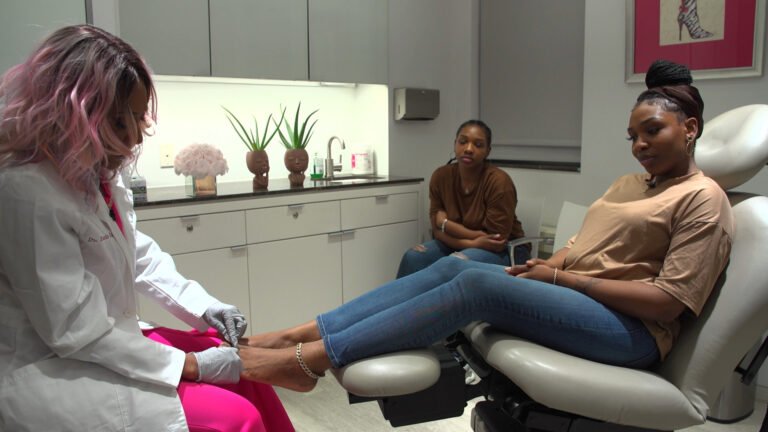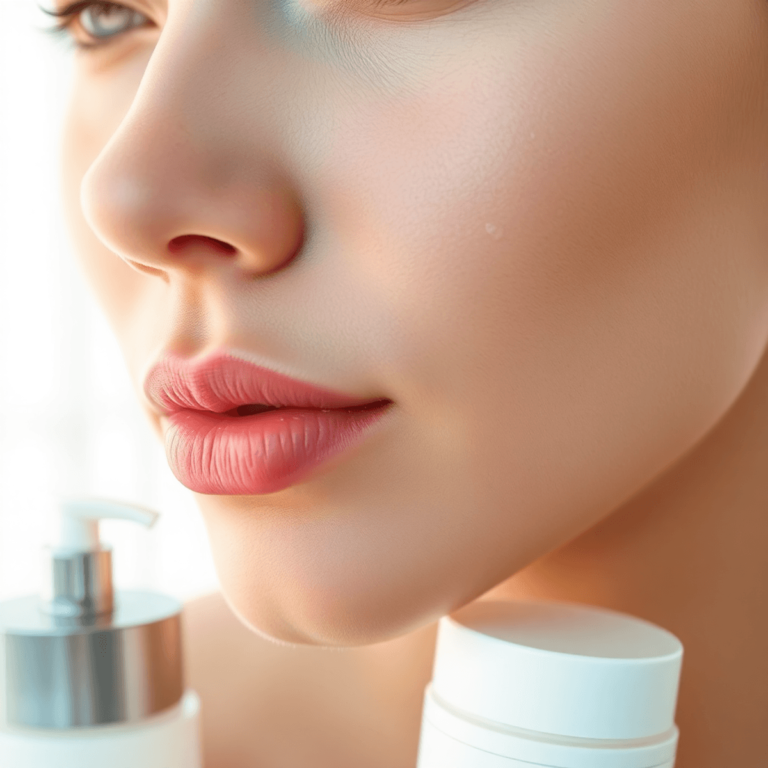How to Get Rid of Pimples on Your Butt

Introduction
How to Get Rid of Pimples on Your Butt—this might not be a topic that comes up often, but it’s a common concern for many. Butt acne, also known as pimples on butt, manifests as small, pimple-like bumps on the buttocks. These bumps are typically caused by folliculitis, an infection of the hair follicles.
Butt acne can be quite bothersome due to:
- Discomfort and Pain: Sitting or wearing tight clothing can make the discomfort worse.
- Aesthetic Concerns: While not always visible, it can still affect your confidence.
The main point is that butt acne can be managed. With proper care and preventive measures, you can keep these annoying pimples away. Understanding the causes and following a complete skincare routine will help you achieve healthier skin.
Understanding the Causes of Butt Acne
Folliculitis and Its Role in Butt Acne Development
Folliculitis is a primary factor in the development of butt acne. This condition occurs when hair follicles become infected or inflamed due to bacteria, fungi, or physical irritation. The hair follicles on your buttocks are particularly prone to such infections because they are often exposed to sweat, friction, and pressure from sitting.
Common Causes of Butt Acne
Several factors can trigger or worsen folliculitis:
- Sweating: Excessive sweating can lead to clogged pores and bacterial growth. Activities that cause intense perspiration, like working out, can increase the likelihood of developing butt acne.
- Chafing: Constant friction from tight clothing or prolonged sitting can irritate the skin, making it more susceptible to folliculitis. This is especially common in people who wear tight pants or synthetic fabrics that do not allow the skin to breathe.
- Shaving/Waxing: Hair removal methods such as shaving and waxing can irritate the hair follicles, leading to inflammation and infection. Using improper techniques or dull razors further increases this risk.
- Infections: Bacterial (e.g., Staphylococcus aureus) and fungal infections (e.g., Candida) are known culprits behind folliculitis. Poor hygiene practices can exacerbate these infections, resulting in more severe outbreaks.
Other Skin Conditions That May Resemble Butt Acne
It’s important to differentiate butt acne from other similar-looking skin conditions:
- Keratosis Pilaris: Often mistaken for acne, keratosis pilaris is caused by a buildup of keratin that blocks hair follicles. It results in small, rough bumps typically found on the thighs and buttocks.
- Boils (Carbuncles): These are painful, pus-filled bumps that arise from deeper bacterial infections within hair follicles. Unlike typical butt acne, boils are larger and may require medical drainage.
- Contact Dermatitis: This condition occurs when the skin reacts to an allergen or irritant. Symptoms include redness, itching, and rash-like bumps which can be mistaken for acne but are actually a form of eczema.
Understanding these various causes helps you take targeted actions to manage and prevent butt acne effectively. Recognizing symptoms early can also guide you in seeking appropriate treatments before conditions worsen.
Hygiene Practices to Prevent Butt Acne Breakouts
Hygiene practices play a crucial role in preventing butt acne breakouts. Keeping clean helps reduce bacteria and excess oils, which often cause pimples.
Regular Washing with Antibacterial Soap
Using antibacterial soap is one of the most effective ways to keep the skin on your buttocks clean and free from bacteria:
- Choose a mild antibacterial soap: Look for products specifically designed to be gentle on the skin yet effective against bacteria.
- Wash regularly: Make it a habit to wash the affected area at least once daily. This helps remove dirt, sweat, and bacteria that can clog pores.
- Focus on technique: Use lukewarm water and gently scrub the area with your hands or a soft washcloth. Avoid harsh scrubbing as it can irritate the skin further.
Benefits of Daily Showering
Daily showering offers multiple benefits when it comes to how to get rid of breakouts on your buttocks:
- Sweat Removal: After activities that cause sweating (like workouts or hot weather), showering promptly helps remove sweat. Sweat can mix with bacteria and dead skin cells, leading to clogged pores and breakouts.
- Reduction of Bacteria: Showering daily washes away bacteria that accumulate on your skin throughout the day.
- Refreshes Skin: Regular showers help keep your skin feeling fresh and less prone to irritation.
Additional Tips for Maintaining Good Hygiene
Incorporating some additional hygiene practices can provide further protection against butt acne:
- Pat Dry After Showering: Use a clean towel to gently pat dry your buttocks after showering. Rubbing vigorously can cause irritation.
- Change Underwear Frequently: Wear clean underwear every day and consider changing more frequently if you sweat a lot. Opt for breathable fabrics like cotton.
- Use Moisturizers Sparingly: If you need to moisturize, choose non-comedogenic (won’t clog pores) products suitable for sensitive skin.
Maintaining good hygiene is essential in combating butt acne breakouts. By adopting these practices, you can significantly reduce the chances of pimples forming on your buttocks and enjoy healthier skin overall.
Choosing the Right Clothing to Minimize Butt Acne Flare-Ups
How Tight Clothing Affects Your Skin
Wearing tight clothing can significantly contribute to skin irritation and butt acne development. Tight fabrics trap sweat and oil against your skin, creating an ideal environment for bacteria to thrive. This can lead to clogged pores and folliculitis, a common cause of butt acne. Additionally, tight clothing often leads to chafing, which further irritates the skin and exacerbates existing pimples.
Fabrics That Help Prevent Butt Acne
Choosing breathable materials is crucial in preventing butt acne flare-ups. Fabrics that allow airflow help keep your skin dry and reduce the accumulation of sweat and bacteria. Consider integrating these types of materials into your wardrobe:
- Cotton: A natural fiber that is both breathable and soft, making it a great choice for minimizing irritation.
- Moisture-wicking fabrics: These synthetic materials are designed to draw moisture away from the skin, keeping you dry even during intense physical activity.
- Bamboo: Known for its antibacterial properties, bamboo fabric is another excellent option for preventing butt acne.
- Lightweight fabrics for hot weather: Incorporating the best fabrics for hot weather into your wardrobe can further help in keeping your skin clear.
Styles That Are Gentle on Your Skin
Loose-fitting clothes are less likely to cause friction and pressure on your skin, helping to minimize butt acne flare-ups. Here are some styles to consider:
- Loose-fitting underwear: Opt for boxers or boy shorts instead of tight-fitting briefs or thongs.
- Relaxed-fit pants: Choose pants with a looser cut around the thighs and buttocks to reduce pressure on your skin.
- Flowy skirts and dresses: These options provide excellent airflow and reduce the likelihood of chafing.
When selecting workout gear, prioritize comfort over style. Tight athletic wear may be trendy, but loose-fitting options made from moisture-wicking fabrics will better protect your skin during exercise.
Key Points to Remember
- Avoid tight clothing: Reduces trapped sweat and oil, decreasing bacterial growth.
- Select breathable fabrics: Materials like cotton, moisture-wicking synthetics, bamboo, or lightweight options suitable for hot weather promote airflow.
- Choose loose-fitting styles: Minimizes friction and pressure on the skin.
By making thoughtful clothing choices, you can significantly reduce the risk of developing butt acne. Incorporate these recommendations into your daily routine to keep your skin healthy and clear.
Effective Topical Treatments for Butt Acne Management
Dealing with butt acne can be frustrating, but the right topical treatments can make a significant difference. Over-the-counter options often contain active ingredients like benzoyl peroxide and salicylic acid, which are effective in treating mild cases of butt acne.
Benzoyl Peroxide
Benzoyl peroxide is a powerful antibacterial agent that targets the bacteria responsible for acne. By reducing the bacterial count on your skin, it helps prevent new pimples from forming.
- How it works: Benzoyl peroxide penetrates deeply into the pores, releasing oxygen that kills acne-causing bacteria. This process not only clears existing blemishes but also prevents future breakouts.
- Usage tips: Start with a lower concentration (2.5% to 5%) to minimize skin irritation. Apply a thin layer to the affected area once or twice daily, depending on tolerance. Ensure to follow up with a moisturizer to combat dryness.
Salicylic Acid
Salicylic acid is another effective ingredient commonly found in acne treatments. It belongs to a class of compounds known as beta-hydroxy acids (BHAs) and is particularly good at exfoliating the skin.
- How it works: Salicylic acid dissolves dead skin cells and unclogs pores, reducing the likelihood of pimples forming. Its anti-inflammatory properties also help soothe irritated skin.
- Usage tips: Look for products with 0.5% to 2% salicylic acid concentrations. Apply once daily initially, then increase to twice daily as your skin adjusts.
Combination Products
Some products combine benzoyl peroxide and salicylic acid for a more comprehensive approach:
- Benefits: Combining both ingredients can provide dual-action benefits—fighting bacteria while exfoliating dead skin cells.
- Recommendations: Be cautious when using combination products as they may increase the risk of dryness and irritation. Consider starting with individual treatments before moving on to combination products if needed.
Application Tips
To maximize the effectiveness of these topical treatments:
- Cleanse thoroughly: Wash the affected area with a gentle cleanser before applying the treatment.
- Apply consistently: Consistency is key—regular application ensures continuous action against acne.
- Avoid overuse: Overusing these products can lead to excessive dryness or irritation, which could exacerbate the condition.
Other Ingredients to Consider
While benzoyl peroxide and salicylic acid are highly effective, other ingredients can also help manage butt acne:
- Lactic Acid: An alpha hydroxy acid (AHA) that exfoliates dead skin cells and improves skin texture.
- Sulfur: Known for its antibacterial properties, sulfur can help reduce oiliness and clear clogged pores.
Selecting the right topical treatment involves understanding your skin type and tolerance levels. Starting with lower concentrations and gradually increasing usage can prevent potential side effects while effectively managing butt acne.
Natural Remedies to Soothe Pimples on Your Buttocks
Exploring natural remedies can offer gentle yet effective ways to manage butt pimples.
1. Tea Tree Oil
Tea tree oil is a popular choice due to its potent antimicrobial properties. When applied topically, it can reduce bacteria and soothe inflammation. Dilute a few drops of tea tree oil with a carrier oil like coconut oil before application to avoid irritation.
2. Witch Hazel
Witch hazel is another beneficial natural remedy. Known for its anti-inflammatory and astringent qualities, witch hazel can help reduce redness and swelling while cleansing the skin. Apply it using a cotton pad after showering for optimal results.
Other Natural Remedies:
- Aloe Vera: Its soothing and anti-inflammatory properties can help calm irritated skin.
- Apple Cider Vinegar: Diluted with water, it acts as an astringent that helps balance the skin’s pH and reduces bacteria.
- Turmeric Paste: Mixing turmeric with water or honey creates an antibacterial paste that can be applied to affected areas.
These remedies not only address butt pimples but are also often used for facial acne, offering versatile solutions for various skin issues.
Avoiding Irritation and Managing Active Breakouts Effectively
Avoiding irritation and preventing scarring is crucial when dealing with butt pimples. The first step in this process is to resist the urge to scrub or pick at the pimples. Scrubbing can aggravate the skin, leading to increased inflammation and potential scarring. Picking at pimples can introduce bacteria into the affected area, causing infections that worsen the condition.
Strategies for Managing Active Breakouts
To manage active breakouts effectively, consider these strategies:
- Gentle Cleansing: Use a mild, non-comedogenic cleanser to wash the area gently. This helps remove excess oil and bacteria without stripping the skin of its natural moisture.
- Topical Treatments: Apply over-the-counter treatments that contain benzoyl peroxide or salicylic acid. These ingredients help reduce inflammation and unclog pores, promoting faster healing.
- Warm Compress: A warm compress can soothe inflamed areas and promote drainage of pus-filled pimples. Soak a clean cloth in warm water, wring it out, and apply it to the affected area for 10-15 minutes.
- Moisturizing: Use a light, non-greasy moisturizer to keep the skin hydrated. This prevents dryness and reduces the risk of irritation from treatments.
Practical Tips
- Wear Breathable Fabrics: Opt for cotton or moisture-wicking materials that allow your skin to breathe. This reduces sweating and minimizes friction that can irritate pimples.
- Stay Hydrated: Drinking plenty of water helps maintain skin hydration from within, supporting overall skin health.
- Avoid Tight Clothing: Loose-fitting garments reduce pressure on your skin, preventing further irritation.
By incorporating these practices into your routine, you can manage active breakouts more effectively while minimizing the risk of irritation and scarring.
When to Seek Professional Help for Persistent Butt Acne Issues?
Certain signs indicate that it’s time to seek medical attention for persistent or severe butt acne. Recognizing these signs early can prevent further complications and ensure you receive the appropriate treatment:
- Recurring Infections: If you experience frequent bouts of butt acne that don’t respond to over-the-counter treatments, this could be a sign of a deeper bacterial or fungal infection needing professional intervention.
- Severe Pain or Discomfort: Intense pain, swelling, or discomfort that interferes with daily activities suggests the need for medical evaluation. These symptoms may indicate more serious conditions like cystic acne or boils.
- Spreading Pimples: Noticeable spreading of pimples beyond the buttocks area could signify an infection that’s not confined to one spot. A healthcare provider can diagnose this accurately and recommend suitable treatment.
- Presence of Large, Deep Lesions: Large, deep, pus-filled lesions are often resistant to standard treatments and may require prescription medications such as topical antibiotics or oral antibiotics.
- Scarring and Hyperpigmentation: Persistent acne that leads to scarring or dark spots might benefit from dermatological treatments. Procedures like chemical peels or laser therapy can be effective in reducing scars and pigmentation issues.
Consulting a dermatologist can provide tailored solutions based on your specific condition, ensuring a comprehensive approach to managing stubborn butt acne.
Maintaining Healthy Skin Beyond Just Treating Butt Pimples
To achieve and maintain healthy skin beyond just treating butt pimples, consider adopting several key preventive measures. These practices help ensure that your skin remains resilient and less prone to breakouts.
Role of a Balanced Diet
A balanced diet plays a crucial role in supporting overall skin health. Consuming a variety of vitamins and minerals can significantly impact the appearance and resilience of your skin. Incorporate the following into your daily meals:
- Fruits and Vegetables: Rich in antioxidants, these foods help combat free radicals that can cause skin damage. Examples include berries, spinach, and carrots.
- Healthy Fats: Omega-3 fatty acids found in fish, flaxseeds, and walnuts support skin’s barrier function.
- Proteins: Essential for skin repair and regeneration, include lean meats, beans, and legumes in your diet.
Importance of Hydration
Staying hydrated is another critical factor in maintaining optimal moisture levels within your skin barrier. Drinking enough water throughout the day helps:
- Flush Toxins: Adequate hydration aids in the removal of toxins that could contribute to acne breakouts.
- Maintain Elasticity: Well-hydrated skin is more elastic and less prone to irritation or damage.
For more insight into the importance of hydration, consider exploring these 6 reasons to drink water.
Additional Preventive Measures
Adopting these additional preventive measures can also support long-term skin health:
- Regular Exercise: Promotes blood circulation which delivers oxygen and nutrients to the skin.
- Adequate Sleep: Ensures proper cell turnover and repair processes.
- Avoiding Allergens: Be mindful of potential allergens in laundry products or skincare items that might irritate your skin.
By focusing on these aspects—diet, hydration, exercise, sleep, and avoiding allergens—you create a foundation for healthier skin that goes beyond merely treating butt pimples. This holistic approach not only improves the condition of your buttocks but enhances your overall well-being.
Conclusion: Taking Control Over Your Skin Health Journey!
Taking control over your skin health involves a comprehensive approach. Combining proper hygiene practices, thoughtful clothing choices, effective topical treatments, and natural remedies can significantly reduce the occurrence of butt acne.
Embrace these strategies to manage and prevent pimples on your buttocks effectively. Remember, consistency is key. For persistent issues, don’t hesitate to seek professional advice.
Implementing these steps ensures a healthier skin journey. Understanding how to get rid of pimples on your butt empowers you to maintain clear and comfortable skin.
FAQs (Frequently Asked Questions)
What is butt acne and why can it be bothersome?
Butt acne, also known as pimples on the butt, is a common skin issue that can cause discomfort and self-consciousness. It occurs when hair follicles become clogged or infected, leading to inflammation and breakouts. Proper care and preventive measures can effectively manage this condition.
What are the common causes of butt acne?
Common causes of butt acne include folliculitis, excessive sweating, chafing from tight clothing, shaving or waxing irritation, and certain skin infections. Additionally, skin conditions like keratosis pilaris, boils, and contact dermatitis may resemble butt acne.
How can I prevent butt acne breakouts through hygiene practices?
Maintaining good hygiene is essential for preventing butt acne breakouts. Regular washing with antibacterial soap helps keep the affected area clean and free from bacteria. Daily showering also removes sweat and reduces the risk of clogged pores.
What clothing choices can help minimize butt acne flare-ups?
To minimize butt acne flare-ups, opt for breathable materials that allow airflow to the area. Choosing loose-fitting clothes can also reduce friction and pressure on the skin, which helps prevent irritation and breakouts.
What topical treatments are effective for managing butt acne?
Over-the-counter topical treatments containing benzoyl peroxide or salicylic acid are effective for managing mild cases of butt acne. These ingredients work by targeting bacteria and helping to unclog pores.
When should I seek professional help for persistent butt acne issues?
Seek professional help if you experience persistent or severe cases of butt acne, such as recurring infections or significant discomfort. A healthcare provider can offer tailored treatment options to address your specific concerns.










